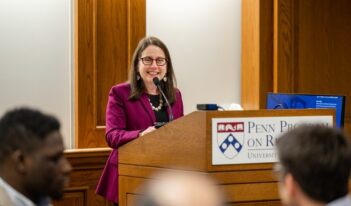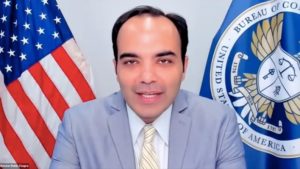
The Penn Program on Regulation’s Best-in-Class Regulator Initiative examines how to define and measure regulatory excellence.
Few government professionals today work so vitally at the front lines of human welfare as do regulators. Around the world, they strive to protect their societies’ members from the many risks associated with economic activity and to solve other important problems. Many of them face daunting societal expectations, presented with vast and often uncertain challenges that call for sound judgment and swift but judicious action. They need to find ways to engage productively with regulated industry, other governmental institutions, and various segments of the public affected by the work they do. Faced with the need often to integrate and achieve multiple objectives, and to do so in a manner consistent with democratic principles and the best available scientific knowledge, regulators face monumental challenges.
Under such demanding circumstances, what does excellence mean for a regulatory institution? How can a regulator move forward and measure progress and improvement? Nearly every other field of endeavor has its standards of excellence, from the arts to medicine. What about regulators? What is their equivalent of a Nobel Prize?
To determine what it means, and what it takes, for a regulator to be excellent, the Penn Program on Regulation (PPR) spent much of the past year working on a major, multi-pronged initiative, convening dialogue sessions and conducting research. Sponsored by the Alberta Energy Regulator, the regulator of energy development in the Canadian province of Alberta, PPR’s Best-in-Class Regulator Initiative has brought together leading authorities on regulation from around the world to identify attributes of regulatory excellence and methods for regulatory performance assessment. PPR has also convened two major dialogue sessions with a wide variety of interested and affected organizations and individuals from Alberta, including landowners, industry groups, municipal governments, environmental organizations, Aboriginal communities, and others.
PPR released this week more than twenty reports and papers from this project. Some of these reports summarize the dialogue sessions PPR convened, while others comprehensively distill and synthesize the exhaustive academic research on what works (and what doesn’t) in government regulation. In addition, more than a dozen international experts provide their own incisive and original answers to the question of what makes a regulator excellent.
In this series, The Regulatory Review is featuring essays that draw from the Best-in-Class Regulator Initiative. To launch the series, we are honored to post the prepared remarks of Dame Deirdre Hutton, the Chair of the U.K. Civil Aviation Authority, who delivered the dinner keynote address earlier this spring at PPR’s international expert dialogue held at the University of Pennsylvania Law School.
We also are pleased to include in the series a summary account of the opening keynote presentation delivered at that same dialogue by Dr. David Kessler, former Commissioner of the U.S. Food and Drug Administration. In addition, the series features a synthesis of two other dialogue sessions, held with stakeholders and Aboriginal representatives in Alberta, prepared by The Regulatory Review’s immediate past Editor-in-Chief, Jessica Bassett. We also feature an essay on rating regulatory performance by Cary Coglianese, the Edward B. Shils Professor of Law and Director of the Penn Program on Regulation at the University of Pennsylvania Law School. Coglianese, who leads the Best-in-Class Regulator Initiative and advises The Regulatory Review, is now preparing a final report on the initiative that will be released later this year.
The Role of Stakeholder Relationships in Regulatory Excellence
July 27, 2015 | Dame Deirdre Hutton, UK Civil Aviation Authority
In a keynote address, the Chair of the UK Civil Aviation Authority drew on her experience as a regulator to explain her “rules of thumb as to what makes a good regulator:” have a clear objective in law, have staff members who are real experts in the industry you are regulating, be engaged with all the varied stakeholders and genuinely listen to them, and be transparent in everything you do because that is the way in which you can be judged by your stakeholders.
Rating Regulatory Excellence
July 28, 2015 | Cary Coglianese, University of Pennsylvania
What are we to make of the use of performance measurement systems in the context of governmental entities, in particular regulatory authorities? Rating systems do abound, after all, in the governmental sphere. In addition to whatever general limitations exist with rating systems, the application of rating systems to government might well pose some distinctive issues.
Regulatory Leadership in Tackling Tobacco
July 29, 2015 | Daniel E. Walters, Universty of Pennsylvania
Speaking earlier this spring to a packed auditorium of law students—as well as a cohort of regulators, regulatory scholars, and regulatory practitioners assembled at Penn Law for a workshop on regulatory excellence—former U.S. Food and Drug Administration Commissioner David Kessler recounted why the FDA took up tobacco regulation under his watch and shared what it was like to lead the agency through the ensuing controversy.
What Makes a “Best-in-Class” Regulator?
July 30, 2015 | Jessica Bassett, University of Pennsylvania
How would you define an excellent regulatory authority? Based on two dialogue sessions organized this spring in Alberta, Canada by the Penn Program on Regulation, it appears that many stakeholders of the Alberta Energy Regulator favor an input-based answer to the question of regulatory excellence. These stakeholders repeatedly emphasized that how the regulator interacts with the public is the defining feature of a “best-in-class” regulator.



